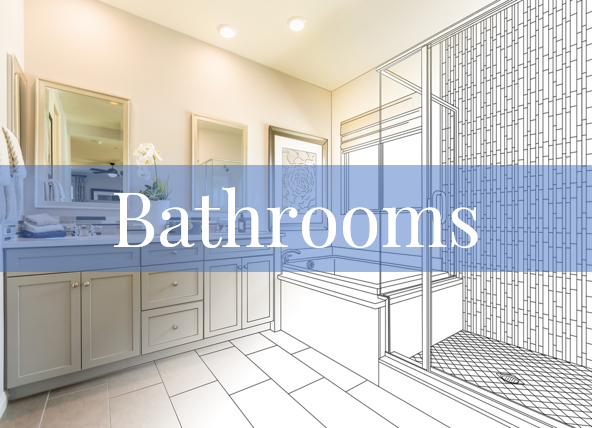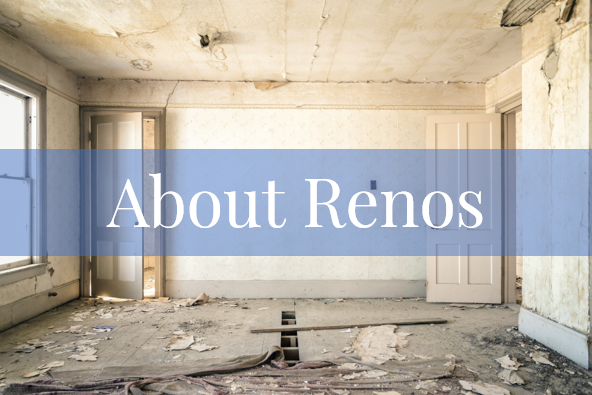A Guide to Ontario Electrical Code and Your Home 0
/The information provided in this blog post is based on our 30+ years of experience in the electrical field. However, if you have questions about the electrical system in your home, please contact the Electrical Safety Authority at 1-877-372-7233. They are the final authority on electrical in Ontario and will have the knowledge, skill, and ability to advise you based on the laws they create.
We go into many homes to do home inspections, renovations, and repairs. We seldom leave those homes without finding at least one or two electrical safety code violations. More often than not, we see a lot more than two! Some of the violations are minor, but others are serious enough that they could cause a fire.
Most often, the violations are because someone other than a Licensed Electrical Contractor did the electrical work in the home. The home owner, relative, or friend might have done the work, thinking they knew all they needed to know to DIY. Other times, homeowners have hired handymen instead of electrical contractors to do the work, believing they could save some money.
I’m all for saving money on work around the house. However, electrical work is not an area to cut corners in order to save money. You might save, but it could cost you your home, the lives of your family, or yourself.
Prefer to listen?
IT’S THE LAW NOW
In January 2006, it became law in Ontario that only home owners on title or Licensed Electrical Contractors were permitted to do electrical work in a residential home. Not even a Licensed Electrician could legally do work in your home.
So what’s the difference? Licensed Electrical Contractors (LECs) are the only businesses, with some exemptions, such as HVAC installers, in Ontario legally authorized to do electrical work in your home. Qualified electricians are employed by Licensed Electrical Contractors. An electrician is not permitted to perform work for hire unless they are employed by a Licensed Electrical Contractor. For more information on this, go to esasafe.com
This law was put in place because too many house fires were happening because unlicensed people were doing electrical work on residential properties. Consequently, if you have an unlicensed person do electrical work in your home and you experience a house fire, the insurance company will no longer cover the damage. You must be able to show proof that a LEC did the electrical work in your home.
As an on-title home owner, you are legally entitled to do your own electrical work. However, please be safe and abide by the laws. Take out an Electrical Safety Authority (ESA) permit and have an inspector check your work.
Choosing the right team for your home’s electrical projects is essential for safety and peace of mind. At Multi-Trade Building Services, we pride ourselves on our expertise, reliability, and commitment to excellence. See why so many homeowners trust us for their electrical needs.
THE ONTARIO ELECTRICAL CODE RULES FOR YOUR HOME
There are so many common deficiencies that we come across when we work in clients' homes. We will outline some of them here so you can have a look around your home to ensure it is safe. This is not an exclusive list and is not intended to replace an inspection conducted by either an ESA inspector or a LEC. If you wish to have our Master Electrician conduct a full electrical inspection of your home, click here.
In order to test the electrical system in your home, there are a couple of useful electrical tools you should have. An induction tester works by detecting the electric fields associated with AC voltages. Once the tester is placed near the live conductor, the electrostatic or magnetic fields induce a current that flows through the tester. This makes the device indicate the presence of a voltage by lighting up, making a sound, or both.
You should also purchase a receptacle tester with a GFCI reset button. This device will verify that an electrical wall outlet is connected properly. By pushing the reset button, you can also test if your GFCIs are working properly.
ALUMINUM WIRING
In North American residential construction, aluminum wire was used for wiring entire houses for a short time from the 1960s to the late-1970s, during a period of high copper prices. There is nothing wrong with aluminum wiring. However, because it is softer than copper wire, when attached to switches and receptacles, the wires can become loose from the terminals.
It is the recommendation of the ESA that houses with aluminum wire be properly inspected and maintained by a Licensed Electrical Contractor every 3-5 years.
Probably the most common deficiency we see in homes with aluminum wiring is the wrong receptacles and switches attached to the aluminum wire. All aluminum wire must be attached to a specific aluminum-rated receptacle or switch. Decora (rectangular in shape) switches and receptacles are more modern-looking but are only rated for copper wire. If you terminate an aluminum wire in a copper-only-rated device, you will have dissimilar metals in contact. Because they are dissimilar, they expand and contract at different rates. The metal surfaces can oxidize, which causes heat and can lead to fire and damage to the equipment.
Alternatively, you can also transition the aluminum wire to a copper wire and then attach it to a non-aluminum-rated receptacle or switch. This means taking a piece of copper wire and transitioning between the two. This should be done by a LEC.
To see if you have the right plugs and switches in your home, first determine if your home was built during the time when aluminum was used. If you have aluminum wiring, you can turn the power off in your home and remove a random selection of plugs and switches. Al/Cu should be stamped somewhere on the device.
Electrical work isn’t just about functionality—it’s about safety, efficiency, and ensuring your home meets the latest standards. Whether you’re upgrading your panel, adding new fixtures, or tackling a renovation, our licensed experts are here to help. Contact us today to discuss your electrical needs!
BEDROOMS / LIVING ROOMS / DINING ROOMS
Although it’s grandfathered in, the new ESA code requires a receptacle for every 6’ of usable wall space. This new code came into play because many fires were started by extension cords.
Extension cords are designed to be temporary. However, because homes were being built without enough plugs in individual rooms, people would use extension cords permanently. Because they are only designed for temporary use, they were overheating and causing fires.
You would never be required to add additional receptacles, but for safety, you may want to consider it if you are using extension cords. Also, any new construction will require the 6’ rule to be followed.
Another thing to look out for in any room of your home are painted receptacles, switches, and cover plates. This is also an ESA code violation. Paint acts as an insulator and holds in the heat, which can cause sparking and a fire. If you have painted over the plugs and switches in your home, remove them and replace them with new ones.
It’s also very important for you to know which fuses or breakers control which receptacles and lights in your home. In the event of an emergency, you don’t want to start flipping breakers in an attempt to figure out which one turns off the receptacle or appliance. A very thorough panel labelling is a MUST!
BATHROOM
A ground fault circuit interrupter (GFCI) should be in all bathrooms. GFCIs protect us from receiving electric shocks from faults in the electrical devices we use in our home. It works by comparing the input current on the hot side to the output current on the neutral side. A GFCI is required within 1.5 meters of a water source. If water gets into the receptacle, it will shut down the power to the receptacle so that the outlet cannot be used.
If your home doesn’t have a GFCI, it may have been built prior to this becoming an ESA code, which means it would be grandfathered in and not a requirement to be changed. However, for safety, it is a strong recommendation to install a GFCI in all bathrooms.
Please note that not all plugs in a bathroom need to have a GFCI receptacle. If all of the plugs are on the same circuit, you only need one GFCI-rated plug. All of the other plugs will be protected by that GFCI-rated receptacle.
Here are a few other code requirements for bathrooms:
Towel warmer: If you have a towel warmer, check the manufacturer’s recommendation to determine if it should be on a dedicated circuit.
Floor heat: The same thing applies here as for the towel warmer. Also, it is an ESA requirement to have a permit and inspection done whenever floor heating is installed. There is a recorded case where a person didn’t install a thermal sensor on the floor. The floor continued to heat without the sensor turning off at a certain temperature. The home owner passed out on the bathroom floor. His burns were so severe that he died. This is not to be taken lightly. If you’re installing floor heating yourself, make sure you get an ESA permit.
Whirlpool or airjet tubs should be on a dedicated circuit.
There should not be any plugs or switches that are close enough that you can touch them when standing in a tub or shower.
LAUNDRY
There are a couple of basic code requirements in a laundry room. You need a dedicated line for your washing machine and another for your dryer. A dedicated line means that only that one item is on that circuit. If you have thorough panel labelling, you will be able to determine what each breaker controls and therefore know if there is more than one item on a circuit that should be dedicated.
Also worth noting is that a gas dryer needs a dedicated receptacle even though it’s operated by gas.
KITCHEN
Your kitchen should have a dedicated receptacle for the following:
Fridge
Microwave
Dishwasher
Garburator
Island
Freezer
Wine fridges
You should also have a dedicated counter receptacle for every 3 feet of usable counter space. If your home is older, this would not have been part of the ESA guidelines back then, and consequently, it would be grandfathered in. However, for safety, it is a strong recommendation that additional receptacles be installed if you don’t have at least three receptacles at counter height.
To learn more about labelling your electrical panel and how to determine if an appliance is on a dedicated circuit, read the blog post here.
Some additional items you should investigate in your kitchen:
Check your stove fume hood installation manual to see if it needs a dedicated circuit.
There should not be any receptacles located inside cupboards or closets.
Within 1.5 meters of the sink, there should be a GFCI. If this is not the case, you cannot just replace your regular receptacle with a GFCI. It must be a T-slot receptacle, which requires a heavier cable that needs to be run back to the electrical panel. This is best left to a Licensed Electrical Contractor (LEC).
We also often see problems when homeowners replace kitchen counter receptacles and don’t realize they are split receptacles. A split receptacle is one that splits the top and bottom plugs apart, so there are 15 amps going to each. There is a tab that needs to be broken off on the plug. If this isn’t done, you might blow one or both fuses or breakers attached to it.
ELECTRICAL PANEL
To do a thorough inspection of your panel, it is best to consult a Licensed Electrical Contractor, but you can look for a few simple things on your own.
Check to ensure there are no openings visible anywhere. This includes the sides, top, or bottom, or on the surface where the fuses or breakers are.
Look for double tapping inside the panel. This will require that you shut the power off to the panel and use a screwdriver to remove the cover from the panel so that you can see the fuses and breakers underneath. Double tapping is when there are two wires under the same terminal at a breaker or fuse. There should only ever be one wire per breaker.
While the panel cover is off, look for overfusing. Again, you may have to consult a LEC for this, but here are some of the things to look for: 15 amps for most lights and receptacles; 30 amps for dryer; 40 amps for stove; 20 amps for air conditioner; 15 or 20 amps for hot water tank; pool 15 or 20 amps; hot tub 40–60 amps.
EXTERIOR
Here are a couple of things to check on the exterior of your home:
All exterior plugs should be GFCI-protected. They should all have weather-proof or in-use covers.
Lights should be securely fastened to the wall.
Garage door openers should each have their own receptacles. No extension cords should be used to plug in garage door openers.
Extension cords are for temporary use and should never be used to plug in freezers or fluorescent lights in garages, workshops, or basements.
This is not a complete list of all the ESA code requirements for your home. This is a list of the most common deficiencies that we find when we are doing home inspections or working in our clients’ homes. Your safety is extremely important to us, and by taking a few steps to check out the electrical system in your home, you can ensure the safety of yourself and your family. If you would like to book Multi-Trade Building Services to complete an electrical inspection in your home, click the button below to connect with us.
Curious about electricity and your home? We’ve got you covered—read some of our blogs below!
Reasons Why Your Circuit Breakers Might be Tripping and What You Should Do About It
A Step by Step Guide to Labelling Your Electrical Panel
My Fuses Are Blowing! Should I Get a New Electrical Panel
Your home deserves the best.
From electrical upgrades to full-scale renovations, we have the expertise and care to deliver outstanding results. Reach out today to take the first step!






























